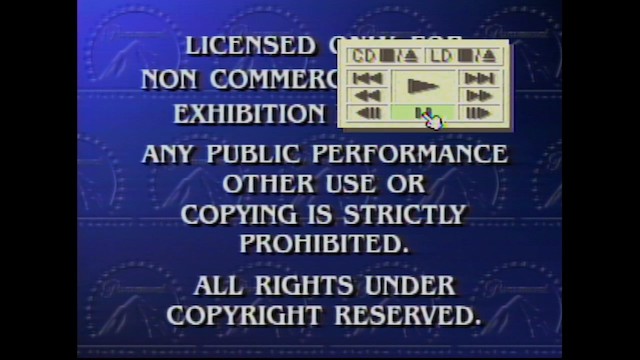The Pioneer LaserActive: Can Sega do what NEC-tendon't?
The Sega CD gets a bad reputation nowadays; it’s a very impressive piece of hardware, and has some great games for it. But sometimes I think people just remember the FMV games and also Sega’s later 32X add-on disaster, and write it off. But Pioneer didn’t– they released a PAC for the LaserActive that brings it the full power of the Sega CD. How could this go wrong?
The Sega CD meets the LaserActive
A quick overview. The Sega CD, known as the Mega CD in territories where the Sega Genesis was called the Mega Drive, was an add-on for said console that added a CD drive and 768kB of RAM. Additionally, it included a faster Motorola 68000 CPU, and an ASIC (that just stands for application-specific integrated circuit, but everyone calls the one in the Sega CD “the ASIC” for some reason) that adds scaling and rotation effects. So unlike the TurboGrafx-16, the CD added some new technical capabilities to the system as well.
Also, because I’m American, I’m probably going to fall back to using “Genesis” and “Sega CD” most of the time. I apologize if that bothers you. I might also end up not using the metric system.
Meanwhile, the Pioneer LaserActive is still Pioneer’s attempt at combining Laserdiscs and video games. Since the PC Engine CD was the most popular CD-based console in Japan, while the Sega/Mega CD was the most popular in the rest of the world, Pioneer apparently figured they’d have both. And thus we enter the Sega PAC. Of which I have a Japanese PAC S-1. The US Genesis PAC isn’t as rare as the TurboGrafx one, but it’s uncommon enough that I just went with the Japanese version to save a few pennies. LaserActive is definitely the console the get if you want to save money, probably.
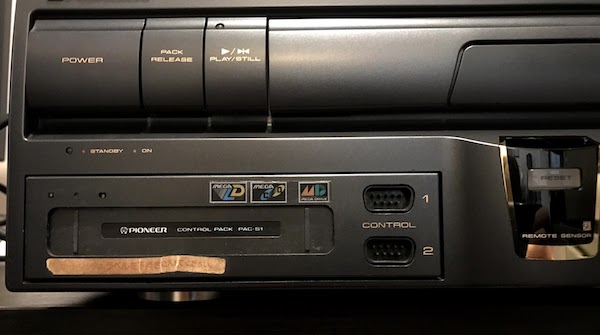
My PAC isn’t in perfect condition either; there should be a LaserActive logo in the top left. Maybe if I ever get into 3D printing I’ll print a new one (guessing it’d need to be a pretty high quality printer or maybe resin to get the small details) There’s a sticker in Japanese on it too, what’s that about? Mine is worn, but I know enough to read it– it says to insert the cartridge facing downwards.

And yes, you do indeed insert cartridges facing down. I’m guessing this decision was made more based off of needing to fit everything in the small space of the PAC. Though, the PAC is larger than, for example, a Sega CDX, so maybe they really did just want to show off the end labels. (The Sega CDX is slightly taller, but that height is in the CD-ROM drive)
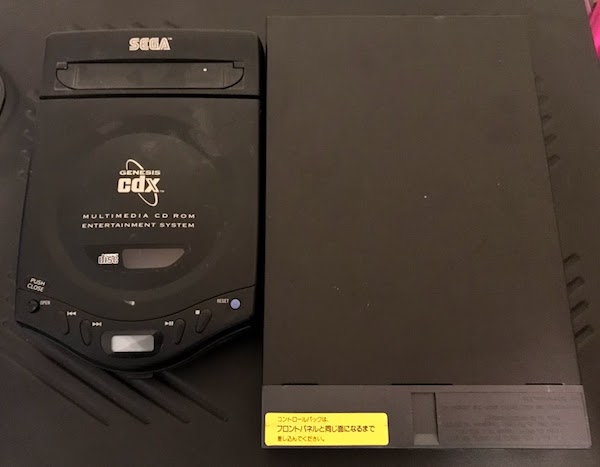
And remember, since this is a LaserDisc player, it doesn’t have more than a composite out. Where we’re going, there’s no RGB. The composite output still isn’t great, either. I’m pretty sure other Genesi can do it better. This also means that the 32X won’t work, since it needs the RGB signal from the Genesis.
Let’s turn this on

Here we see the bootup screen of the Sega PAC. It looks almost identical to its PC Engine counterpart, though the yellow is a bit paler. It also has different logos, but that’s to be expected.
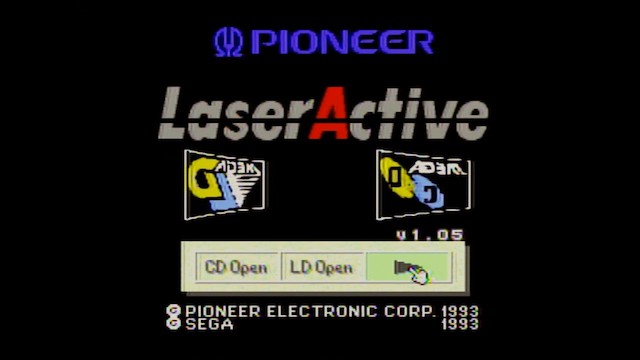
While every other Sega CD boot screen I know of has music, the LaserActive has none, which is a bit disappointing. It does have a scaling effect with the LaserActive logo zooming in, and then spins its lgos once on bootup, but that’s nothing compared to, say, the Model 2 BIOS. (Not my video, from YouTube user “Alex Lee”)
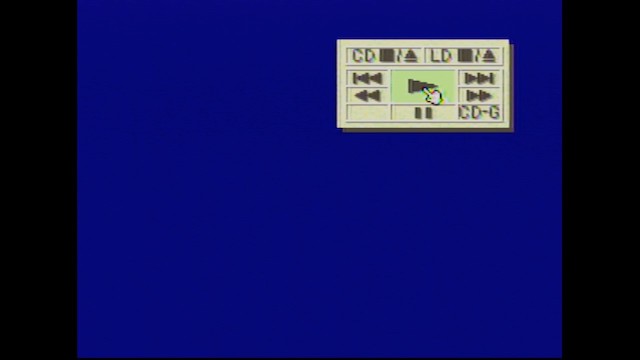
Overall the BIOS is pretty similar to the PC Engine. For example, the CD player is a small yellow box on a blue background; the one on the actual Sega CD systems is much nicer looking. And again I still don’t have a CD+G to test, but maybe one day. I don’t know if there are other variants than the 1.05 here.
Playing some games
The PAC S-1 is a Sega Genesis (well, okay, it’s a Mega Drive), and so it can play games for that console. That’s what the cartridge slot on the front is for, after all.
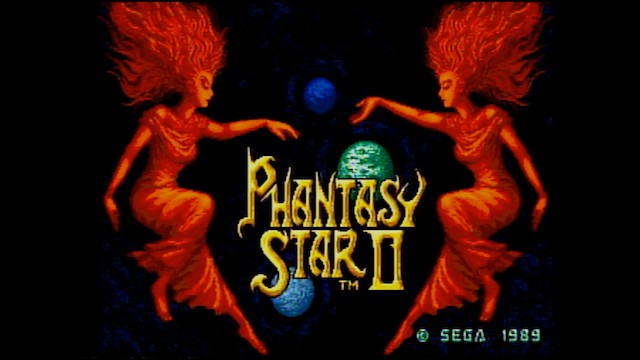
Interestingly, the system does appear to have TMSS, the TradeMark Security System present on later Sega consoles. However, this copy of Phantasy Star 2 runs fine, despite the Japanese version of that game being reported to not have TMSS. Later examination on my Mega Drive 2 showed it worked there too. Unfortunately, Phantasy Star 2 is the only game I have that’s supposed to not have TMSS, so I can’t confirm if this is actually enforcing TMSS, or just displays the message regardless.
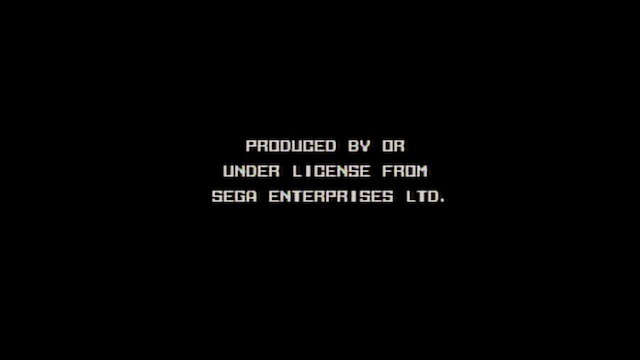
These trademark based security systems were ruled ineffective in the US in 1992 as a result of Sega v. Accolade. Sega continued to include them in their consoles (including US market ones), though, because they were still enforceable in Asia. My understanding is that it was easier to enforce trademark law than copyright law in Taiwan at this time, but I don’t know the details. I’m not a lawyer and I’m definitely not an international lawyer.
Playing other games
The Sega Genesis was designed to be backwards-compatible with the older Sega Master System, using a simple cartridge converter. However, some later models, such as the Genesis 3, had this capability removed, though it can be re-added with a mod. Will we need to do this mod on the LaserActive? Let’s break out our Power Base Converters and try it out!

Yeah, that isn’t going to work. However, today you can get ahold of modern replacements for the Power Base Converter that fit in a cartridge; the only reason for all that plastic on the official one is to look cool. So as long as we’re willing to have cartridges sticking way out horizontally, can we get it to work?
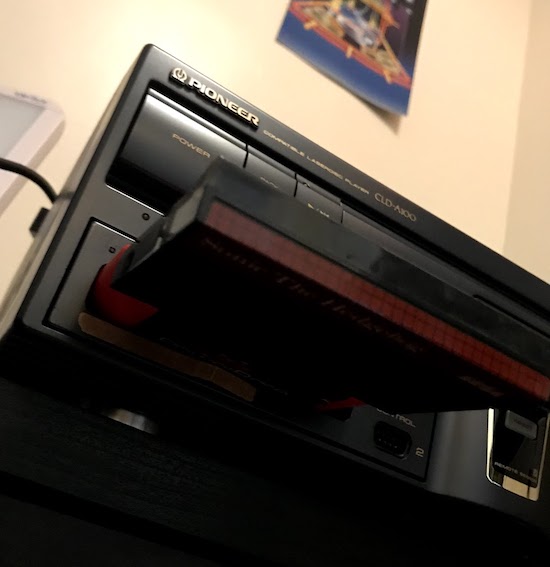
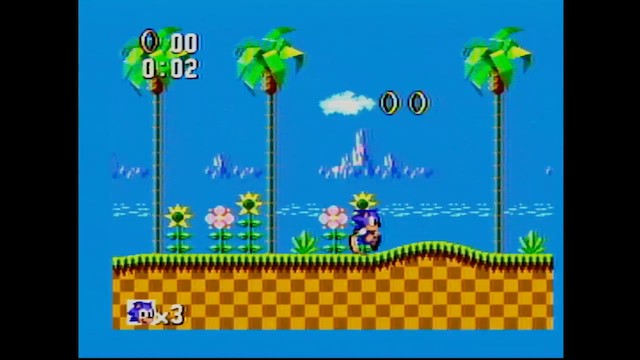
Yep, no problems here. This particular modern Power Base Converter, the “PowerBase Mini FM” by db Electronics, also has a YM2413 to play the FM audio some Master System games had, but that the US Master System couldn’t play. (The Japanese ones could, as long as it was the Japanese Master System, or the Mark III with an addon) But, is this particular console a system you want to listen to game music on?
Audio quality
One thing that often comes up in discussions of the Sega Mega Drive and all its many models is the issue of audio quality. You see, Sega messed with the audio circuit quite a bit over the life of the Mega Drive; generally, the earliest systems are considered to have the best audio.
I don’t have one of those early systems to compare. What I do have, though, is the Sega CDX, which in my book is the best-sounding Genesis. Now, admittedly, this is my childhood Genesis, so of course it sounds right to me. But it has a pretty good output regardless, without overdistortion that you hear on many model 2 systems.
I’ve taken recordings of the first few seconds of Emerald Hill Zone, from Sonic the Hedgehog 2 on all three Genesis-compatible systems I own. These are the same cartridge, at the same recording level, using the same USB audio device. Additionally, the non-LaserActive systems are using the same power supply and the same AV cables.
We’ll start with the Sega CDX as our basis for comparison. Be cautious using headphones, these are all a bit loud.
Now, the Sega Mega Drive 2. This is a common example of “bad” audio, and in this case I definitely agree. You can hear clipping distortions and a lot of noise. (However, I think these systems do sound good in horror games, like Splatterhouse 2) This is the loudest of the bunch.
Finally, the LaserActive. Take a listen before reading on.
To my ears, the LaserActive sounds almost exactly like the Mega Drive 2, with its distortion, just quieter. Let’s take a look at the waveforms: (Laseractive on top, Mega Drive 2 on bottom)
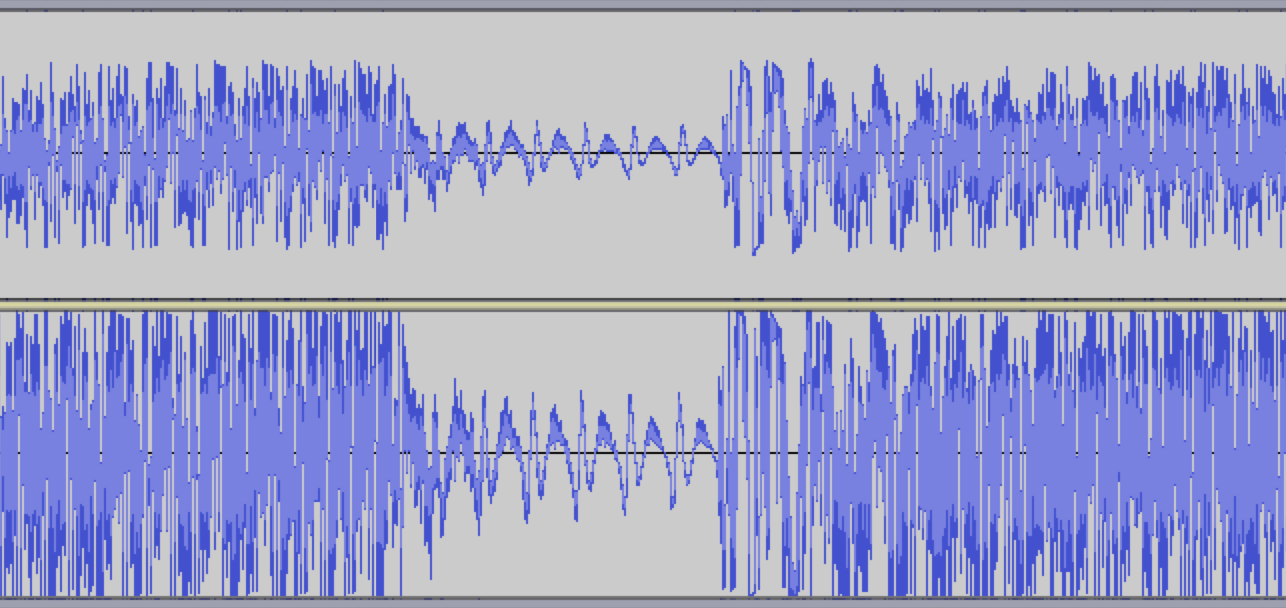
I’m not an expert in audio, but to me it looks to me like the LaserActive’s audio is just being made less loud in mixing, but the waveforms are still clipped beforehand. This is a bit disappointing overall.
Now, here I will make a caveat: my Sega PAC, as far as I know, has not had its capacitors replaced. (As a policy, I don’t replace capacitors on working systems, as my sloppy soldering jobs put things at high risk) The LaserActive and all of its PACs are known to use early 90’s surface-mount capacitors that are prone to leaking and damage.
It’s possible that they are making the LaserActive sound worse than it should. But I doubt it, given that it’s similar to the Mega Drive 2. They might be to blame for the lower audio volume, however. It’s hard to compare without tapping the audio directly off the PAC, rather than from the LaserActive’s audio out. I’m not interested in doing that, but maybe someone else will.
As a Sega CD
Of course, the Sega PAC isn’t just a Genesis. It’s also a Sega CD.

Oops! I should’ve said that this isn’t just a Mega Drive. It’s also a Mega CD. And like any other Mega CD, you can’t play CD games from different regions. Therefore, on this Japanese system, you’ll be limited to playing games from the Japanese region.
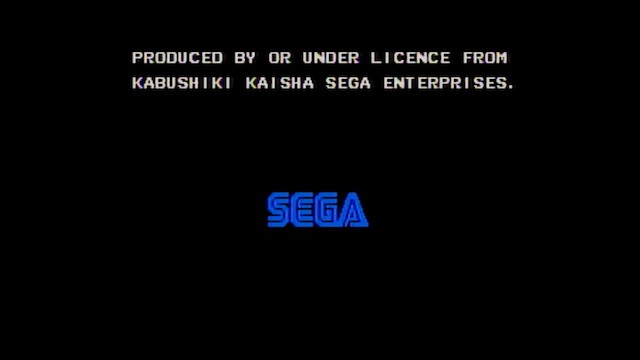
By the way, the Japanese Mega CD boot screen isn’t as fun as the US one, no Sonic here. Also, I had always figured that “Sega Enterprises” was just a translation of “Kabushiki Kaisha Sega” (Kabushiki kaisha being the Japanese word for a corporation). Apparently that isn’t the case, and Sega was known as “Sega Enterprises” because of its merger with Rosen Enterprises in the 60’s. This is all just an aside, though.
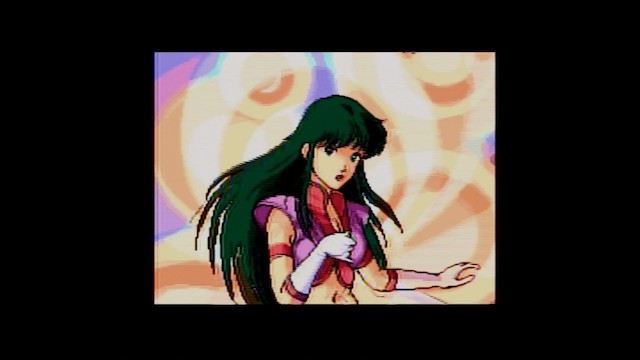
But yes, Mega CD games run fine on it.
Mega LD games
The Mega LD got far more titles than its PC Engine counterpart, with 24 as opposed to the PC Engine’s 11. It even got some LaserDisc games ported to it, including Road Blaster (named, somewhat logically, Road Prosecutor), and Time Gal, which apparently they made out of solid gold or at least that’s the only way I could justify those prices.
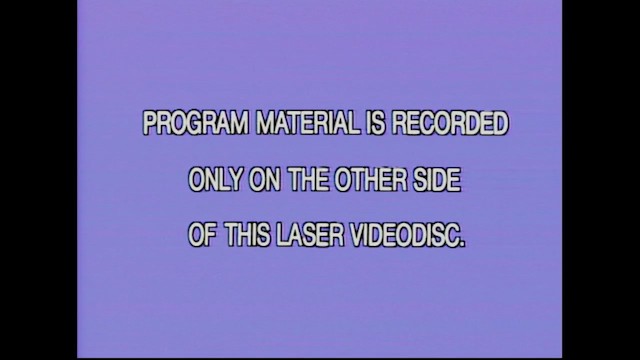
I’ve got just one game. Pyramid Patrol, which seems to be the most common game on the system. I think it may have been a pack-in game with the Sega PAC. Unlike Vajra Ni, it’s a one-sided Laserdisc game. On the other side there’s a message telling you to flip the disc, as is typical of one-sided discs.
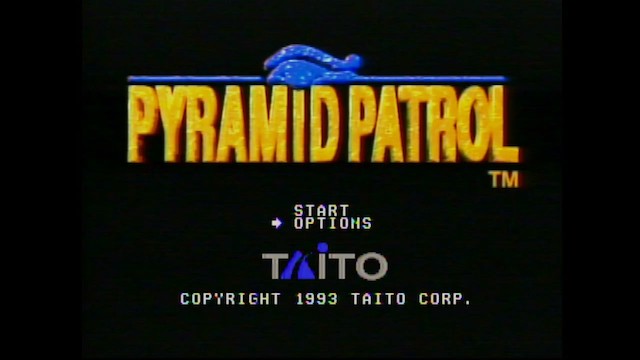
Interestingly, there’s a lot of static in the black areas of this video frame. I’m not sure you can tell here, though. I hope this disc isn’t suffering from laser rot.
What isn’t immediately obvious from the screenshot is that this is a US release. Unlike the Mega CD, Pioneer didn’t bother to add region protection to Mega LD games. With the market for LaserActive games so tiny as-is, I guess they didn’t see the need for it. I’m glad for that.
And what kind of game is Pyramid Patrol?

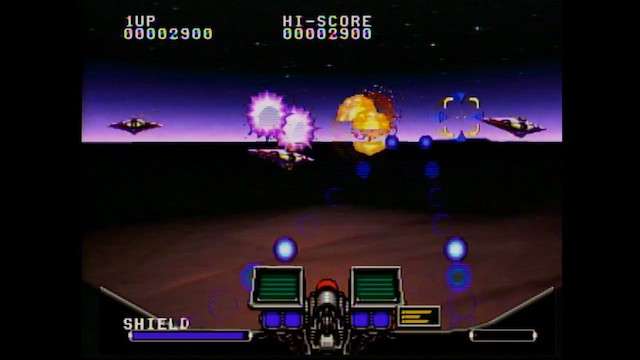
It’s a crosshair shooter! These actually make more sense on the Mega LD side of things than they did on the PC Engine, though, since it can use the Sega CD’s ASIC for scaling the enemies as they fly into the screen. From what little I played of this so far, I prefer it to Vajra Ni.
Laserdiscs!
You might have caught from the last screenshot that Pyramid Patrol is a 240p game; the tell-tale sign is those odd lines, proof that my capture device is trying to treat it like 480i and failing. It’s not a very good upscaler. Indeed, much like the PC Engine version, all games run in 240p.
Also much like the PC Engine version, there are menus that you can activate using the controller. Again the shade of yellow is slightly different. The Mega Drive is known for color limitations compared to the PC Engine. There also seem to be fewer options, though it might be possible to make them show up using the other buttons on the controller.
Summary
That sums up the Pioneer LaserActive. There are two more PACs: a karaoke PAC, and one that allowed the laserdisc player to be controlled by a PC. As far as I know, no commercial dedicated software was released using that last one, though it apparently came with a demo program that was based around using Tenchi Muyo! laserdiscs.
The console most similar to the LaserActive seems to be the NEC PC-FX, the successor to the PC Engine. Unlike the LaserActive, though, it uses a form of MJPEG-encoded digital video stored on CD-ROMs. Also like the LaserActive, it was expensive (though not in comparison) and had a small game library, though unlike the LaserActive, it was focused almost entirely on anime.
I plan to keep an eye out for Road Prosecutor, Triad Stone, and maybe even Time Gal if I get lucky, because that sort of quick-time event FMV game really does seem like the genre most suited to the hardware. But overall I think this is more of a historical footnote than anything else. Remember when people thought FMVs were the future?


